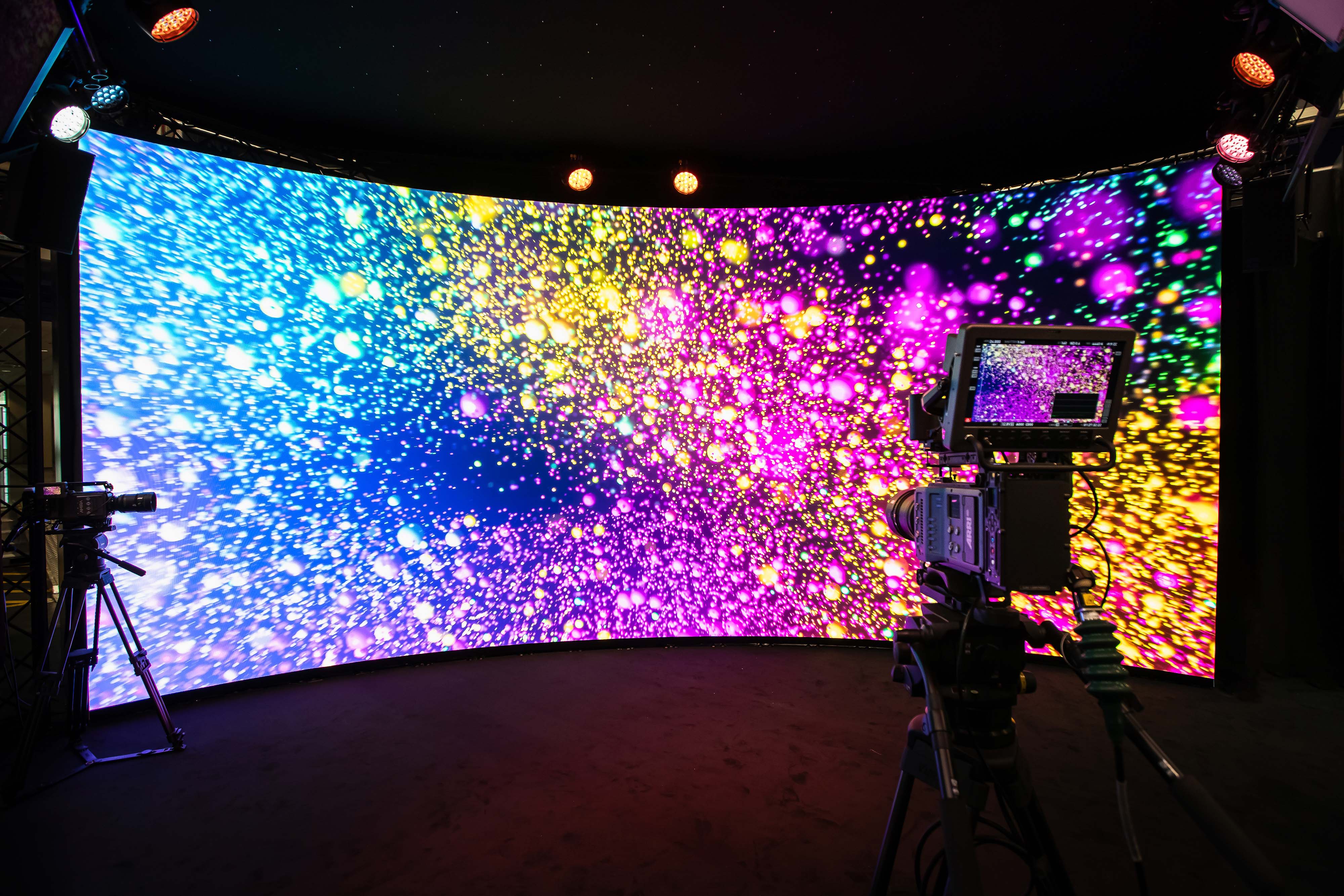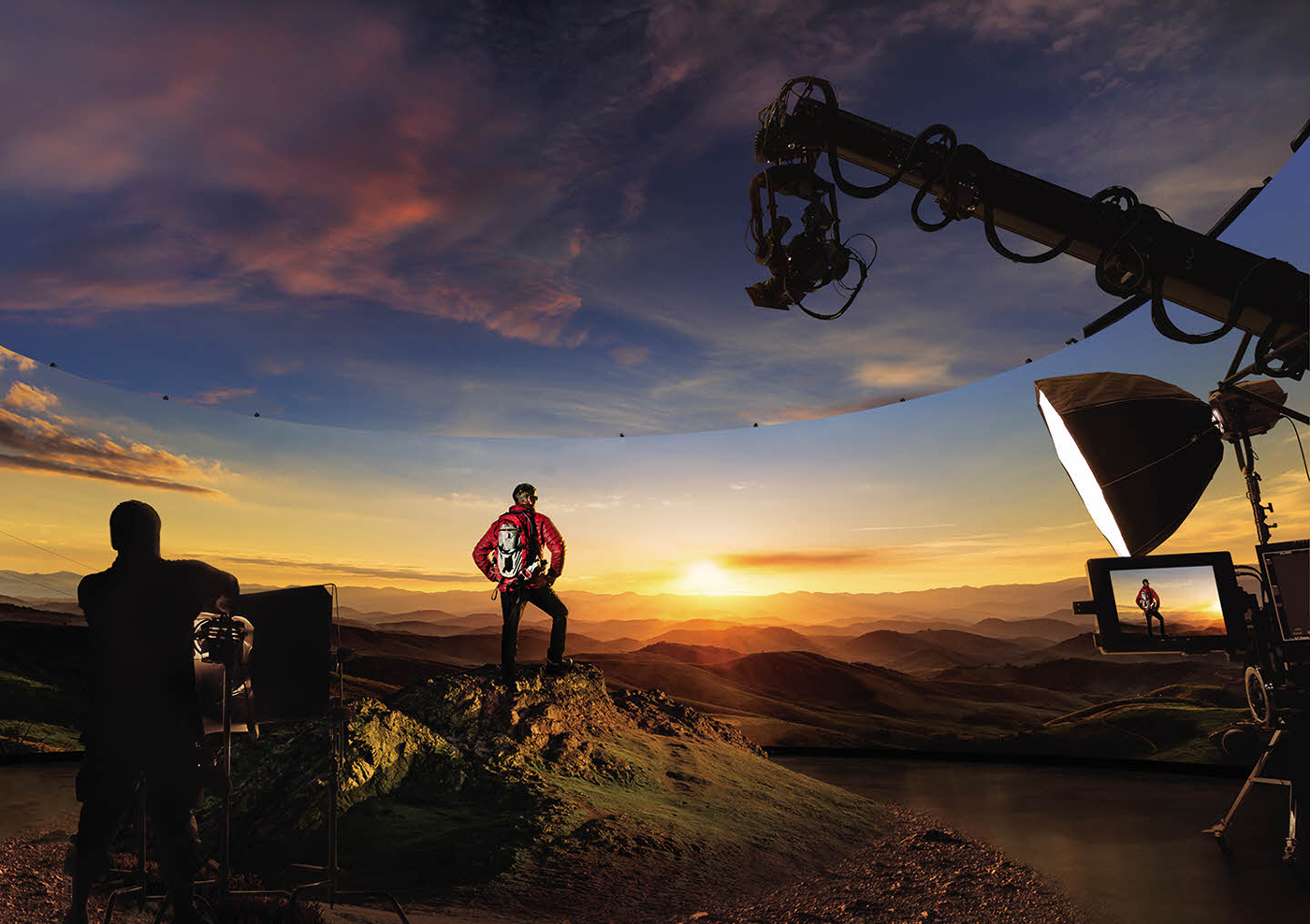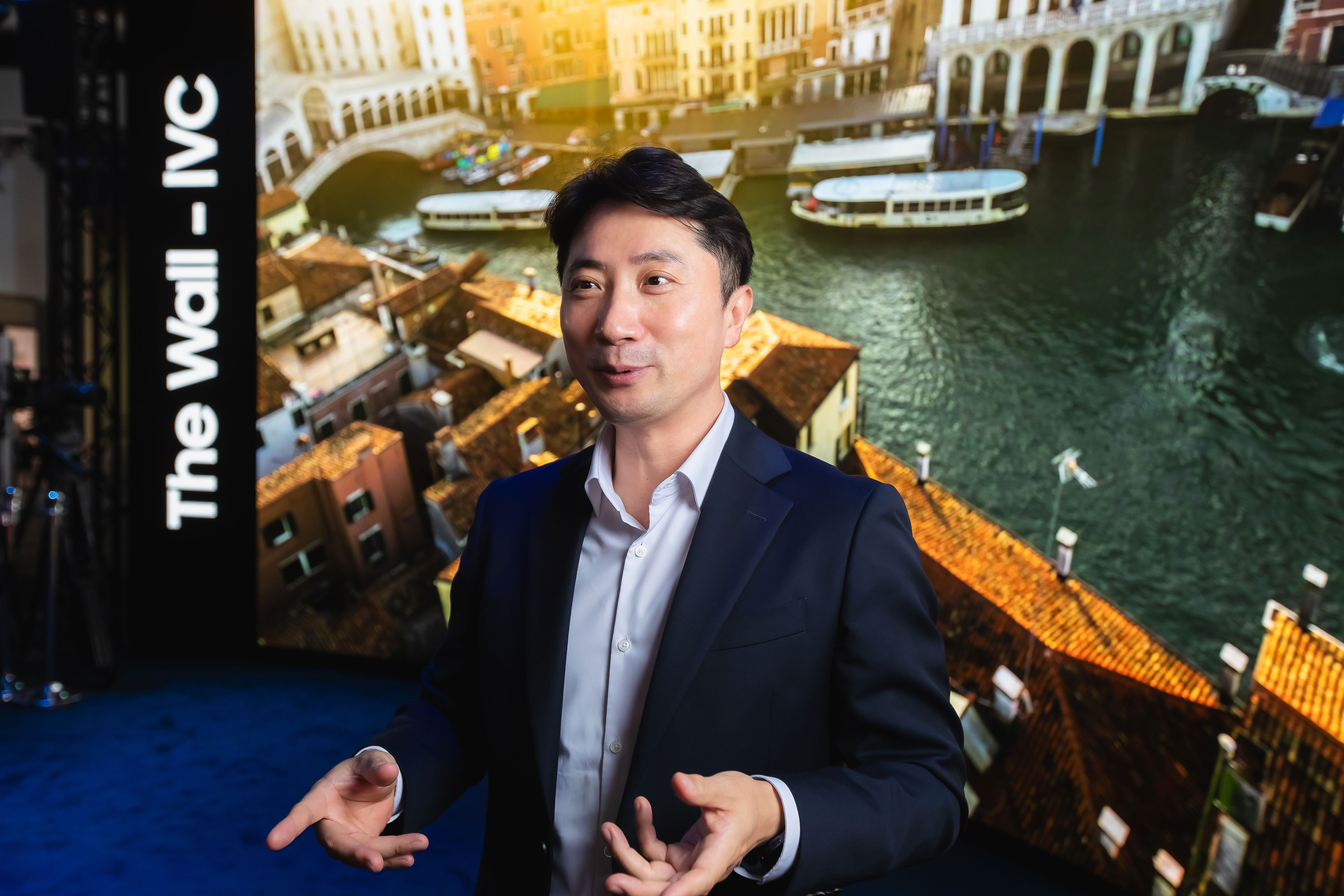How Samsung’s cutting-edge The Wall for Virtual Production is shaping the future of the film industry

The film and media industries are in a pivotal state of flux, with new technologies radically reshaping the way feature films, broadcast programs and TV series are produced. Just as the digital camera disrupted conventional film formats in the early 2000s, something similar is happening once again – with virtual systems set to disrupt the status quo.
With the recent shift towards streaming and home media, studios are motivated to create content faster than ever, and are turning to virtual production as a solution to meet the demand of generating visual effect (VFX) heavy content, keeping up with fast production schedules without sacrificing quality.
Virtual production is empowering studios to create immersive and dynamic sets and backgrounds, integrating them with real-time visual effects technology. The approach simulates photorealistic environments and brings benefits in the form of significant cost and time savings for studios and production companies. Actors, too, can interact with their environment in a more realistic and naturalistic way. With more organizations across the industry turning to this novel filmmaking process, the market for virtual production is projected to grow from $2.9 billion in 2022 to $7.2 billion in 2029, according to Fortune Business Insights.
As the adoption of virtual production continues to expand, new tools are also entering the marketplace, with technology improving year on year. We’ve already seen the quality of augmented reality (AR) improve, along with the Unreal engine – which uses high-performance computing (HPC), 3D modeling, as well as physics to save studios time and money on post-production. Ultra-large LED displays, like The Wall for Virtual Production (IVC) by Samsung – shown at the International Broadcasting Convention (IBC) – are also bringing scenes to life and giving virtual production a leg up as the industry continues to grow.
Virtual production in action today

It’s a watershed moment for virtual production, with major productions like Disney’s The Mandalorian tapping into the technology. Previously, shots filmed on a green screen would be sent to the VFX department, but having everything on an LED screen streamlined the process.
This was an astounding achievement, but it only marked the beginning of the shift in the way production companies would soon approach filming. Once the technology was proven to work effectively, other franchises followed suit. Now dozens of TV and film productions use a number of virtual production technologies, from House of the Dragon to Top Gun: Maverick. This list is only expected to grow, as is the list of tools and systems that companies are offering, along with the likes of Samsung building on the existing technology to mature this new school of film production.
Samsung entered the industry with a bang, with a new version of The Wall display, The Wall for Virtual Production (IVC). Based on modular technology, IVC lets film studios and set designers choose from a variety of installation options for different production environments and needs, ranging from a perfectly flat screen to up to 5,800R curvature. It can be hung or stacked with other screens and is designed to be resilient to any dust and particles, which are common in production environments.
Its integrated Virtual Production Management (VPM) solution and intuitive interface also make it easy to manage the screen and generate the highest-possible picture quality. To display colors as accurately and consistently as possible, The Wall for Virtual Production also features 3D lookup tables (LUTs) for color correction, wide-gamut HDR color processing and color adjustment between individual cabinets or modules. The VPM is also capable of detecting and resolving any potential LED-related issues.
The benefits of LED displays for virtual production
Principally, ultra-large LED walls create virtual content and let filmmakers integrate them with real-time visual effects to reduce the time and cost of content production. But what does this look like in practice? A film production that would have previously cost $100 million could now be made with just $25 million using the virtual production method with technologies like Samsung’s The Wall for Virtual Production – a staggering savings, according to the Wall Street Journal (WSJ). Ads made using the technology can also cost up to 40% less than if producers used traditional methods, according to Forbes.
Samsung’s The Wall for Virtual Production is leading innovation for the film industry this year. It’s an extension of The Wall – a display that’s been instrumental in a number of productions, including when in use by CJ ENM, the South Korean entertainment company. This 2021 partnership embedded the modular Micro LED display into the firm’s new studio, namely in the form of a 1,000-inch screen with a custom oval display of 20m in diameter and 7m in height with a massive resolution of 32K x 4K.
"The Wall for Virtual Production not only amplifies digital effects but also simplifies and accelerates the creative process," said Charlie Park, vice president of visual display business at Samsung Electronics. "Using the ultra-large LED walls, studios can create virtual content and integrate visual effects in real-time, transforming TV, film and creative industries by making production more efficient and cost-effective."

The display has pixel pitch options of P1.68 and P2.1, and supports dedicated studio frame rates of 23.976, 29.97, and 59.94Hz for various kinds of production. It also features gen-locking which synchronizes the screen with a camera’s video signal. The state-of-the-art display also offers a refresh rate of up to 12,288Hz, as well as a maximum brightness of 1,500 nits, a 35,000:1 contrast ratio, as well as a curvature of up to 5,800R. It can also be stacked up with other screens or hung, as needed to offer actors maximum immersion.
Virtual production is expanding at an exciting pace, with much of the film industry seeking ways to innovate throughout this decade and tell new stories with cutting-edge technologies. With virtual production maturing at an exciting pace, it’s sparking a whole host of new and upcoming projects into life.
The Wall for Virtual Production (P1.68 and P2.1 models) will be available globally, including Europe, from today.
Read more about how The Wall for Virtual Production is reshaping the future of the film and TV industry, and learn about the features packed into each model, by clicking here.
Sign up to the TechRadar Pro newsletter to get all the top news, opinion, features and guidance your business needs to succeed!